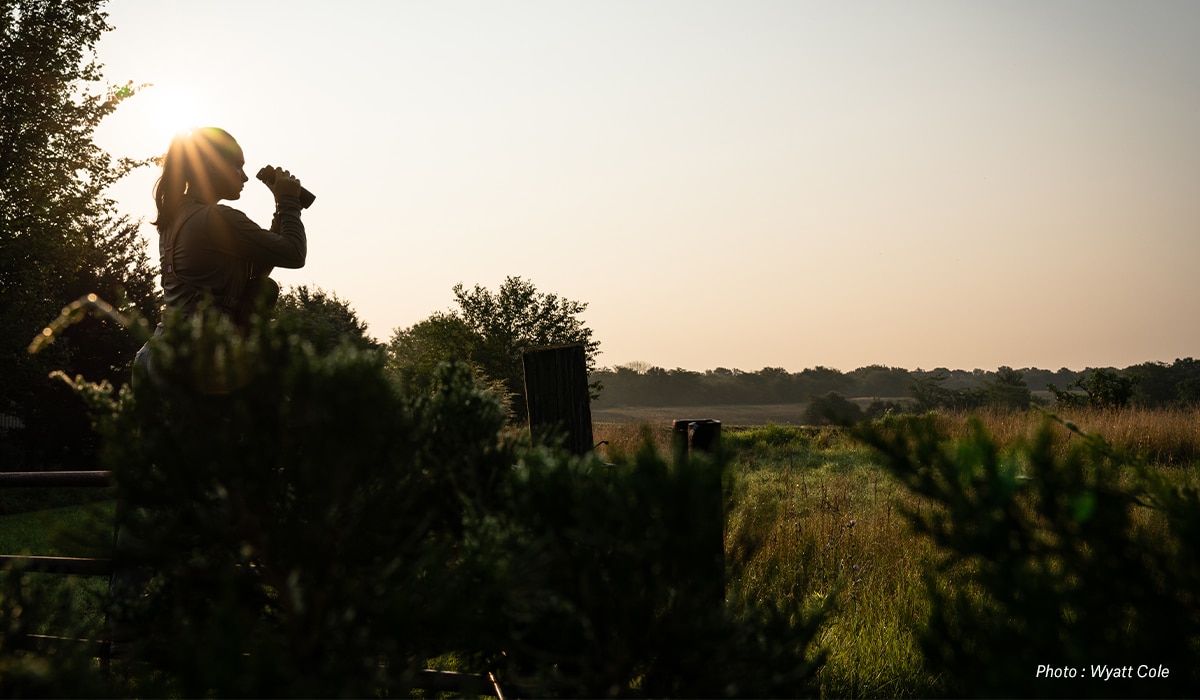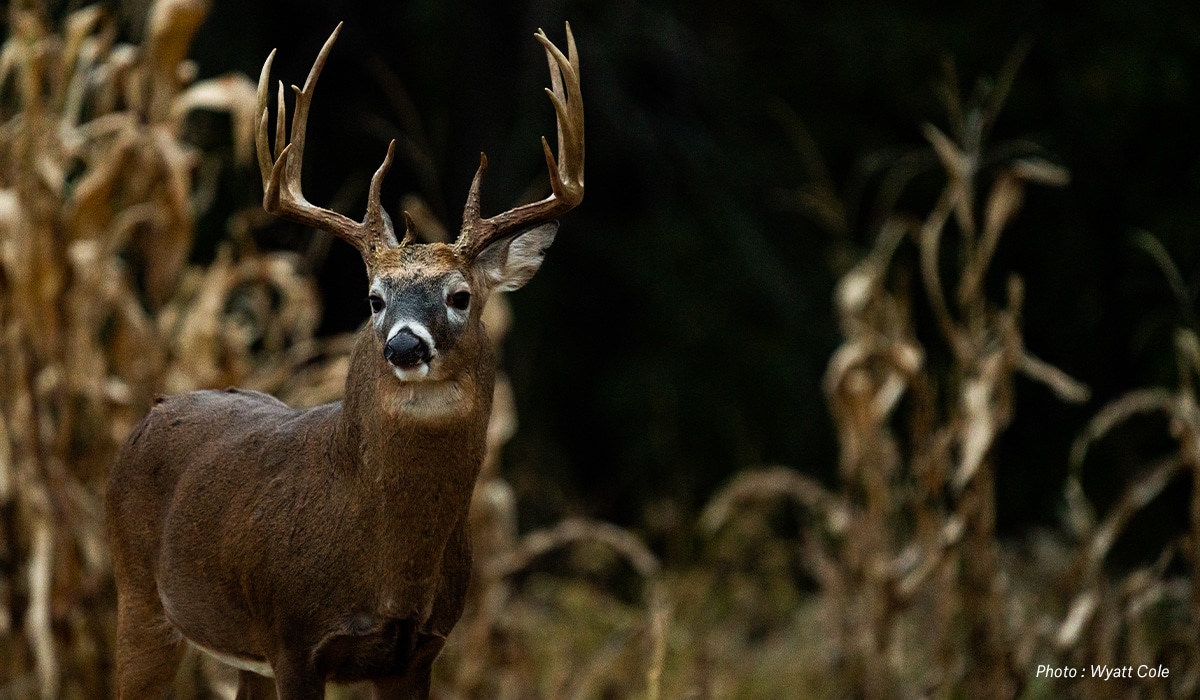A common question I receive seemingly every year from whitetail hunters is, “How many acres do I need to hunt?” Like most things with whitetail hunting, the answer isn’t black and white and can take some delving into in order to fully explain the spectrum of exactly how many acres you need to deer hunt—or how many acres you need to be a successful deer hunter.
Given my diverse background of properties I’ve hunted all over the Midwest, the answer I typically provide to this type of question is varied, and that’s what I’m going to attempt to explain to you in this blog post. To give you an idea of where I’m coming from, the two biggest bucks I’ve shot have come off an eight-acre private parcel and a 20-acre private parcel. Conversely, my next two biggest have come off a 400-acre public piece and a 1000-acre public piece. That’s a bit of a difference if you ask me. So, as you’re trying to figure out the answer to how many acres you need, it’s not going to be the same for everyone.
How Many Acres Are Available To You?
The first part of this answer all comes down to what you have available to you. As you can probably already tell, you don’t need hundreds or thousands of acres to successfully hunt whitetails. I hunt all over the Midwest on properties that vary tremendously in size. I take what I can get. For instance, where I live in Northern Minnesota, I have hunting that is available to me very close to home. I can hunt in city limits, and I have multiple properties I can hunt within 10 to 15 minutes of my house. Most of these properties, though, are fewer than 20 acres. It’s what’s available to me, and it works out.
Of course, if you have a 1,000-acre or larger lease or property you own, I’d be capitalizing on that all day. When it comes to hunting big vs. small properties, there are differences in how you should approach hunting them, and those differences are important.

Big vs. Small Acreage Properties
As you can probably tell, the answer to how many acres you need to hunt is whatever you can get access to. Crazy concept, but it’s true. Whether you have permission on a five-acre parcel or own 1,000 acres, both scenarios can provide successful whitetail hunting. There are some key differences, though, that you need to take into account.
Small Acreage Property Overview
Let’s say you have permission to hunt a five-acre parcel. The way in which you hunt this will obviously be lightyears different from how you hunt a big property. The first thing I want to touch on is that you need the right property if you’re going to successfully hunt a property this small. Let’s use my eight-acre piece as an example. When I initially went to get permission, I loved the property around it. There was food and thick bedding all around. The piece I got permission on was essentially a travel corridor. For such a small property, that’s perfect. So, if you’re going to be hunting a small property, make sure it’s in a good neighborhood and there’s good whitetail habitat surrounding it.
The next thing we must cover is how you actually hunt it. With a small property like this, your margin for error is extremely small compared to a big property. If you bump a buck or hunt on the wrong wind and get busted, you may be ruining your chances right off the bat. With a property this small, if you cause a buck to shift how he’s moving even slightly, you may be out of the game. When I hunt small properties like this, I tend to hunt them less and wait more for the perfect conditions.

Large Acreage Property Overview
There are some major differences if you’re hunting a large tract of land. Depending on how big your piece of property is, the properties surrounding your piece may not be as important if you were hunting a small piece. It depends on what your property is like, but you’ve got a much better chance of having everything a whitetail needs on your property alone—things like food, bedding, cover, etc. On a big piece, the more you have going for you, the less time whitetails need to spend on neighboring land. This means better hunting for you.
How you hunt the property thus becomes different as well. You can tend to get more aggressive or hunt marginal winds, for example. Let’s say you hunt a marginal wind and end up getting busted by a target buck. If that buck clears out of that area and moves a quarter mile, now instead of him being on a property you can’t hunt, you just have to re-find him on your property. Of course, there will be exceptions to the rule, such as if you’re hunting near a property boundary. Generally speaking, you’ve got more room for error on a big hunting property.
So How Many Acres Do You Need To Hunt?
There is no clear-cut answer. What you need to figure out is what you have available to hunt, how you like to hunt, and how you can be successful. Whether you’ve got a few acres, a few hundred, or a few thousand, you can be a successful whitetail hunter. Don’t let the amount of acreage determine your levels of success.